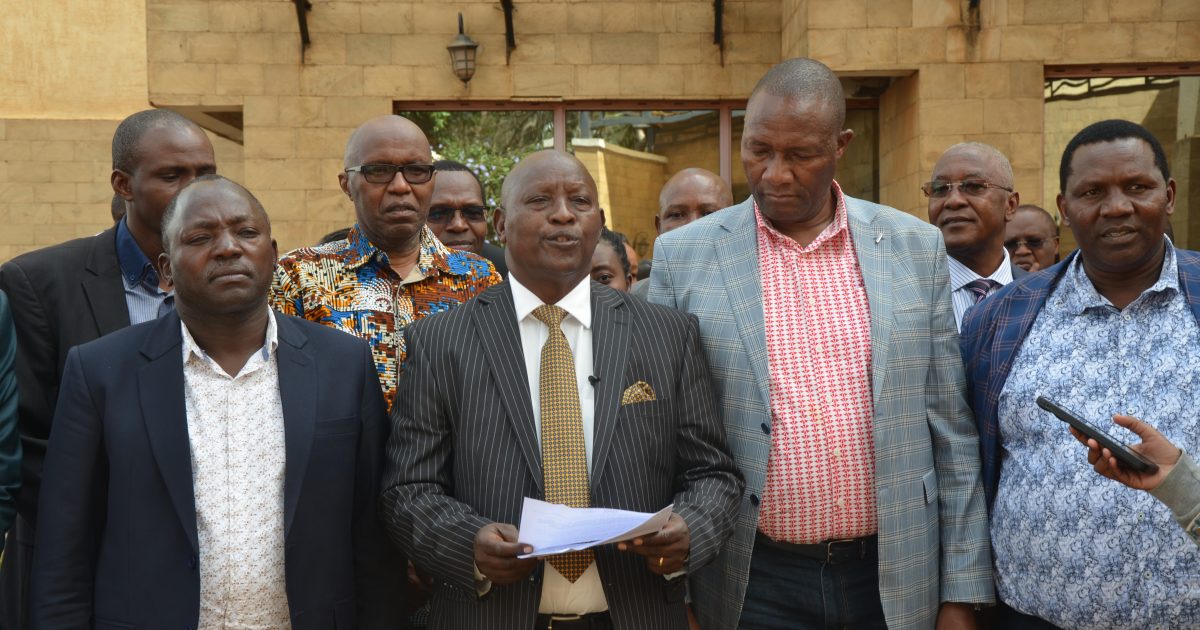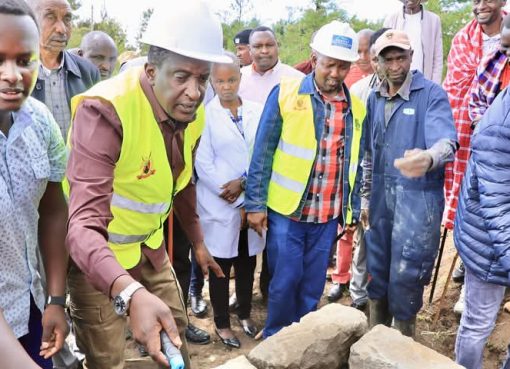A two- day meeting convened by counties that form the Central Region Economic Bloc(CEREB) in Nyeri county, ended with a resolution to develop the region’s Economic Blueprint and a Domestic Resource Mobilization Strategy in the next three months.
The main objective of the blue print, according to the Bloc’s Chair, Mutahi Kahiga, will be to help the 10 member counties improve their economic status, by enhancing production, promoting regional industrial and manufacturing investments and developing an infrastructure network which will facilitate social economic development within the region.
“The Blue Print will focus on critical sectors in the region such as production sectors in agriculture and tourism, social sectors in education and health and enabling sectors like ICT, financial services and infrastructure. It will also address crosscutting issues such as gender, climate change and disadvantaged youth groups,” stated Kahiga.
The Bloc brings together Embu, Kiambu, Kirinyaga, Laikipia, Meru, Murang’a, Nakuru, Nyandarua, Nyeri and Tharaka-Nithi counties.
Kahiga noted that the enactment of the Common Economic Agenda would set the stage for the region to market itself as a One-Stop Shop for investors and partners, seeking to tap the unexploited opportunities from CEREB.
It will equally address barriers that have previously restricted economic integration and cross-border trade within the central region.
“Counties in CEREB will endeavor to establish flagship projects that define county specific advantage production and trade.
The governments in the region will improve enabling infrastructure and regulatory mechanisms backed by laws enacted by CEREB county assemblies.
“Our legal teams will work with the technical team to ensure that trade barriers within the Bloc are eliminated,” he said.
The meeting was attended by Governors Joshua Irungu(Laikipia)and Kiarie Badilisha (Nyandarua) and Deputy Governors Wilson Nyaga (Tharaka-Nithi) and David Githanda (Kirinyaga).
Also present were County Attorneys and County Executive Committee Members in charge of health, trade, finance, agriculture and education from the member counties.
The meeting also reawakened the push for CEREB member counties to focus on increasing their individual own source revenue.
The Chair said the move would curb the counties’ dependence on the national budgetary allocation and in turn allow the Bloc realize CEREB its blueprint.
He also called on his counterparts to work towards strengthening the Bloc in order to position itself as an economic powerhouse.
“This region is rich, in terms of resources. I am sure that if we worked together as CEREB and came up with strategies of taping into the resources that we have, it would open our potential and also open the space for investors to do business. This will also be a game change for our region as it will also give us a platform from which we can claim what is surely ours,” he said.
Of all the eight regional blocs, CEREB, Lake Region Economic Bloc(LREB)and Nairobi county form the largest contributors to the country’s Gross Domestic Product with each surpassing the 20 per cent mark. According to a 2023 Gross Domestic Survey by the Kenya National Bureau of Statistics, the region’s five-year collective contribution to the overall GDP from 2018 to 2022 stood at 26.3 per cent.
Out of this Kiambu contributed an average of 5.7 per cent, Nakuru 4.94 per cent, Meru 3.3 per cent, Nyeri 2.1 per cent and Murang’a 2.01 per cent.
According to the report, Embu’s contribution was 1.57 per cent, Nyandarua 1.5 per cent, Kirinyaga 1.33 per cent, Laikipia 0.92 while Tharaka-Nithi contribution was 0.60 per cent.
By Wangari Mwangi and Leah Omeri





